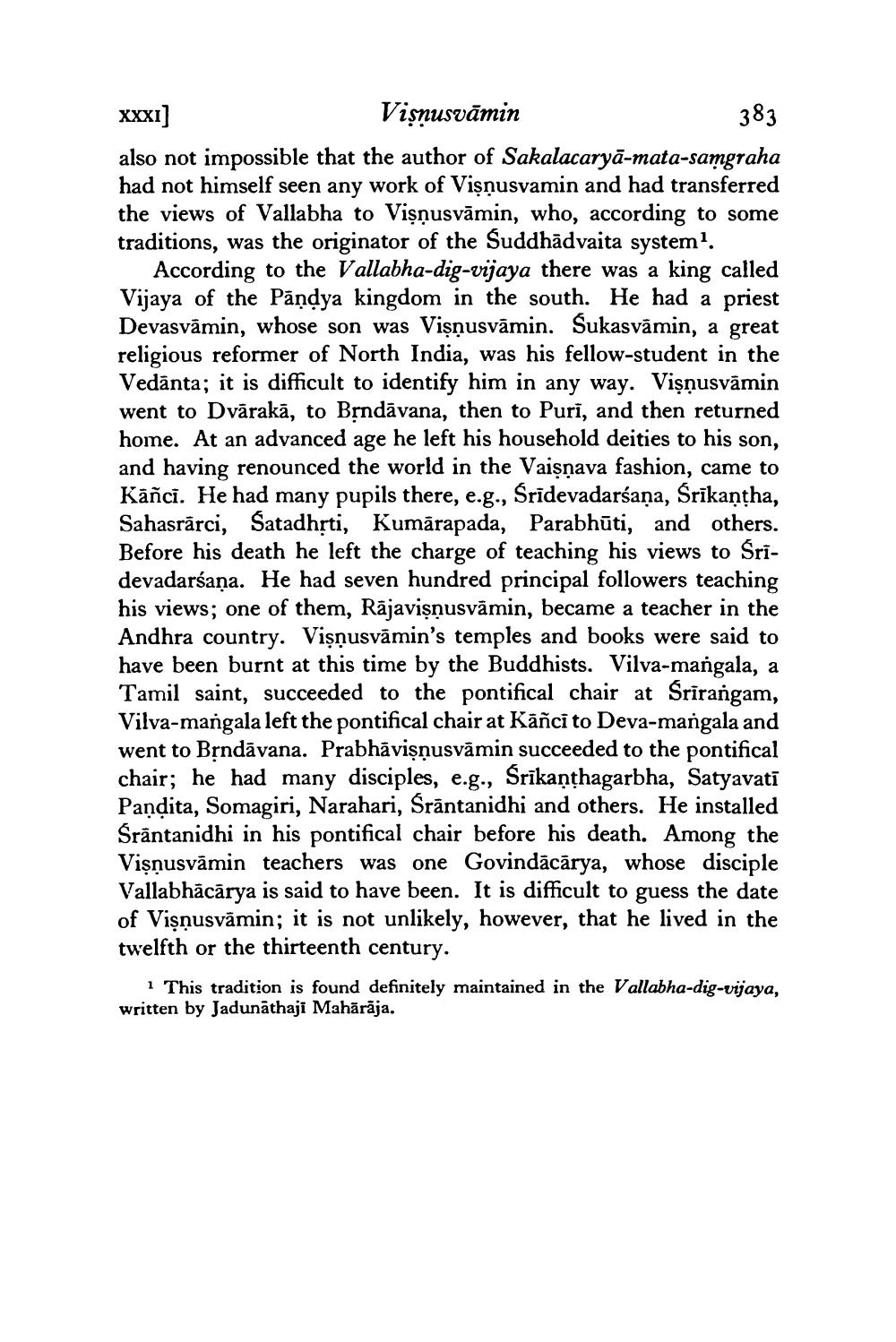________________
XXXI) Vişnusvāmin
383 also not impossible that the author of Sakalacaryā-mata-samgraha had not himself seen any work of Vişnusvamin and had transferred the views of Vallabha to Vişnusvāmin, who, according to some traditions, was the originator of the Suddhādvaita system?
According to the Vallabha-dig-vijaya there was a king called Vijaya of the Pāņdya kingdom in the south. He had a priest Devasvāmin, whose son was Vişnusvāmin. Sukasvāmin, a great religious reformer of North India, was his fellow-student in the Vedānta; it is difficult to identify him in any way. Vişnusvāmin went to Dvārakā, to Brndāvana, then to Puri, and then returned home. At an advanced age he left his household deities to his son, and having renounced the world in the Vaisnava fashion, came to Kāñci. He had many pupils there, e.g., Sridevadarśaņa, Srikantha, Sahasrarci, Satadhrti, Kumārapada, Parabhūti, and others. Before his death he left the charge of teaching his views to Sridevadarśana. He had seven hundred principal followers teaching his views; one of them, Rājavişnusvāmin, became a teacher in the Andhra country. Vişnusvāmin's temples and books were said to have been burnt at this time by the Buddhists. Vilva-mangala, a Tamil saint, succeeded to the pontifical chair at Srirangam, Vilva-mangala left the pontifical chair at Kāñci to Deva-mangala and went to Bệndāvana. Prabhāvişņusvāmin succeeded to the pontifical chair; he had many disciples, e.g., Srikanthagarbha, Satyavati Pandita, Somagiri, Narahari, Srāntanidhi and others. He installed Srântanidhi in his pontifical chair before his death. Among the Vişnusvāmin teachers was one Govindācārya, whose disciple Vallabhācārya is said to have been. It is difficult to guess the date of Vişnusvāmin; it is not unlikely, however, that he lived in the twelfth or the thirteenth century.
1 This tradition is found definitely maintained in the Vallabha-dig-vijaya, written by Jadunāthaji Mahārāja.




